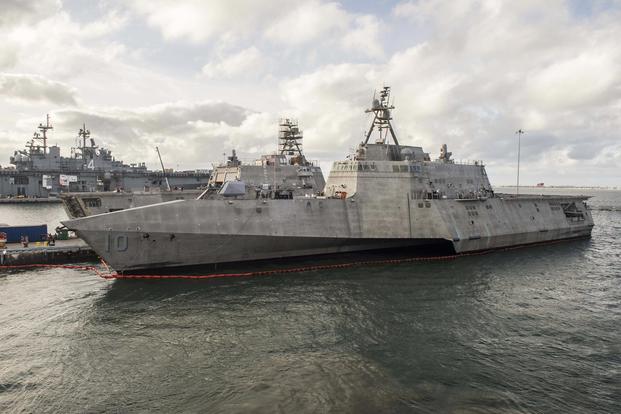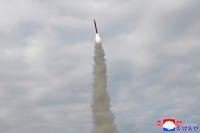The U.S. Navy is poised to deploy a littoral combat ship to Latin America this year for a first-of-its-kind counter-drug mission, U.S. Southern Command's top leader said Thursday.
Testifying before the Senate Armed Services Committee, Adm. Craig Faller told lawmakers the command is working with the Navy to deploy the LCS to South and Central America before the end of the year.
"We expect to have a littoral combat ship this year, and that will be a big benefit for our exercise program for our engagement with partners and because of the flexibility it brings for counter-narcotics interdiction," he said. "Counter-narcotic will be [the LCS'] first mission, and then we look forward to continuous presence moving forward."
Faller testified with Marine Corps Gen. Thomas Waldhauser, head of U.S. Africa Command, on threats to their respective areas of operation.
Related content:
- Navy Brass Optimistic as Littoral Combat Ship Readies to Deploy After Hiatus
- Navy Reassessing Plan for 355-Ship Fleet in New Study, Top Officer Says
- US Aims to Expand Military Partnerships in South America
He noted that requesting additional resources for SOUTHCOM has been tough because the Navy "doesn't have enough ships" to conduct worldwide operations. Last week, Chief of Naval Operations Adm. John Richardson said the service will soon revisit whether its future 355-ship plan is sustainable.
The LCS deployment to the SOUTHCOM region, which Faller called a top priority, will also involve "partnering with nations, training, [and possibly] humanitarian assistance."
It's a "fit for the kind of missions that we have down there," he said.
Last April, then-Defense Secretary Jim Mattis and Joint Chiefs Chairman Gen. Joseph Dunford told lawmakers the Pentagon was reviewing how the LCS mission could aid drug-interdiction efforts in the SouthCom region.
Mattis said the posturing would require the right mix of Coast Guard assets already doing similar missions in Latin America and the Caribbean.
"Is [the mission] primarily law enforcement? Do they need to have people with badges, which would mean Coast Guard cutters were going to have to shift and go to the Department of Homeland Security? Or is it LCSs, because of the nature of an evolving threat?" he said during an April 12 hearing, as reported by Defense News. "We don't have the answer yet, sir, but we're working it. We'll have it sorted out very soon."
The Navy as of August has received 15 LCS vessels with a requirement of 35 total in the fleet. Lawmakers allocated additional funding in the fiscal 2019 budget for three more ships, Defense News said.
In January, Vice Adm. Richard Brown, commander of Naval Surface Forces, said the service plans to deploy three LCSs this year -- two from the West Coast and one from the East Coast.
The deployments would mark the ships' first return to the sea in nearly two years.
The Navy had hoped to send three of the ships overseas during fiscal 2018, following a complete overhaul of the program, including manning adjustments, homeports and training.
But the deployments never happened, largely because of staffing and advanced training concerns.
Brown said the LCS will be in high demand.
"Operational commanders just can't wait to get these ships," he said.
-- Oriana Pawlyk can be reached at oriana.pawlyk@military.com. Follow her on Twitter at @Oriana0214.












